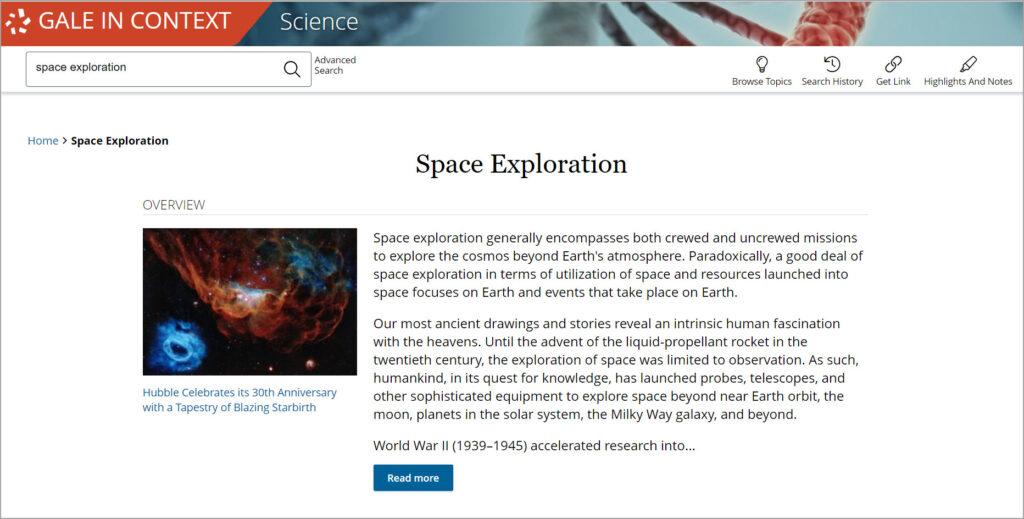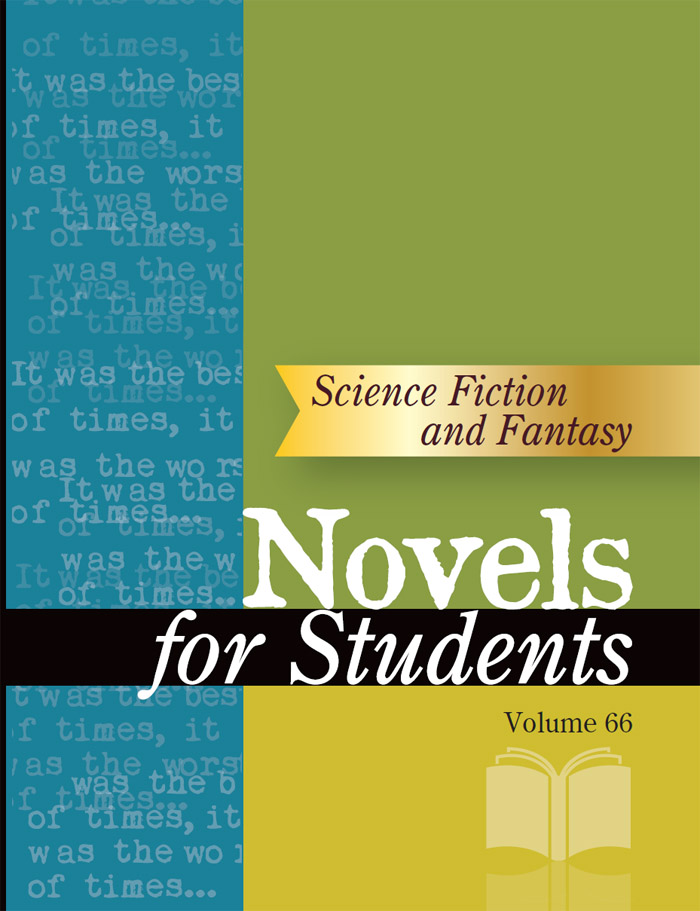| By Gale Staff |
Want to inspire your students to read, explore, and use their imaginations? Celebrate Science Fiction Day in your K-12 classroom on January 2, or the week after returning from the long holiday break. By combining science fiction with real-world examples of scientific concepts, you can help your students become more engaged in both reading and science.
Science fiction stimulates the mind through creative, imaginative stories that provide a different lens into scientific concepts. Students will become more aware of science and technology in everyday life as they explore these topics through sci-fi stories that capture their imaginations. So, let’s look at the ways science fiction can bolster students’ interest in learning.
Engaging K-12 Students through Science Fiction
From reading novels to watching movies, K-12 students can explore scientific concepts as they become immersed in sci-fi stories. Challenge your students to use science fiction to think about the future of technology on a deeper level. Themes like time travel, space exploration, and robotics can instantly captivate students and spur critical thinking.
Reading Recommendations by Grade Level:
Elementary school students can read stories such as The Little Prince by Antoine de Saint-Exupéry or The Last Human by Lee Bacon. These stories provide a basic introduction to the world of science fiction without overwhelming younger readers.
Middle school students can explore classic works, such as A Wrinkle in Time by Madeleine L’Engle, The Hitchhiker’s Guide to the Galaxy by Douglas Adams, or The Martian Chronicles by Ray Bradbury, which offer more complex themes that are easy for teens to relate to.
In high school, students often enjoy iconic works such as Dune by Frank Herbert or The Foundation Series by Isaac Asimov. These books delve deeper into scientific concepts and explore more advanced topics like time travel and intergalactic wars.
These titles are available in large-print format which helps with reading comprehension and fluency.
Using Science Fiction as a Hook for Scientific Inquiry
For students who are already interested in the sciences, science fiction provides a great platform for them to practice scientific inquiry by asking questions such as “What if…?” and “How would…?”. Science fiction can also be used to explore mathematical concepts, particularly when it comes to robotics and artificial intelligence. For example, a time-travel story may provide an opportunity to learn about physics concepts like how time works, the speed of light, and relativity. Students can explore these concepts in greater depth by researching them or discussing them in the classroom.
Integrating Science Fiction into Learning
Using science fiction in the classroom can be a great way to engage students and give them a more memorable learning experience. Here are some suggestions on how you can incorporate science fiction into everyday lessons:
- Have students read short stories in science class and discuss the scientific concepts they encounter.
- Have them write fictional stories based on real-world scientific problems.
- Challenge students to come up with creative ways to solve a problem that is presented in a science-fiction story.
- Ask students to create presentations about scientific concepts based on their favorite science fiction movies.
- Have students build a model of a fictional invention.
- Have them develop their own questions and stories related to the scientific topics they are studying.
Incorporating science fiction into the classroom can effectively foster creativity, critical-thinking skills, and problem-solving abilities. It is also a superb way to stoke students’ excitement surrounding learning and exploring new topics.
Choosing the Best Supplemental Curriculum for Your Classroom
Looking for ready-made content to supplement your science-fiction lessons?
The Novels for Students, vol. 66 series available in Gale eBooks presents easily accessible and content-driven analyses of fiction for K-12 readers. Have learners explore the literary and historical contexts of their favorite science fiction novels and compare works from numerous cultures and time periods. This textbook focuses entirely on science fiction and fantasy novels, making it the perfect anthology to prepare your students for Science Fiction Day.
And, if you’re looking for supporting materials to teach different science concepts or explore the lives of your students’ favorite science fiction authors, explore the options within Gale In Context: Science. Here, you’ll find videos, images, news articles, biographies, and more that can help to bring science fiction stories to life for your students. Plus, with Science, you can highlight content, create notes, translate content into 40+ languages, and use Read-to-Speak technology.
By incorporating science fiction into your classroom lessons, you can open a whole new world to your elementary students, spark an interest in STEM for middle school students, or influence innovation in high school students. With the right supplemental materials from Gale, K-12 students of all ages will be ready to explore space and all its secrets in no time!
Want to learn more about how Gale resources can supplement your curriculum? Contact your education consultant today.



